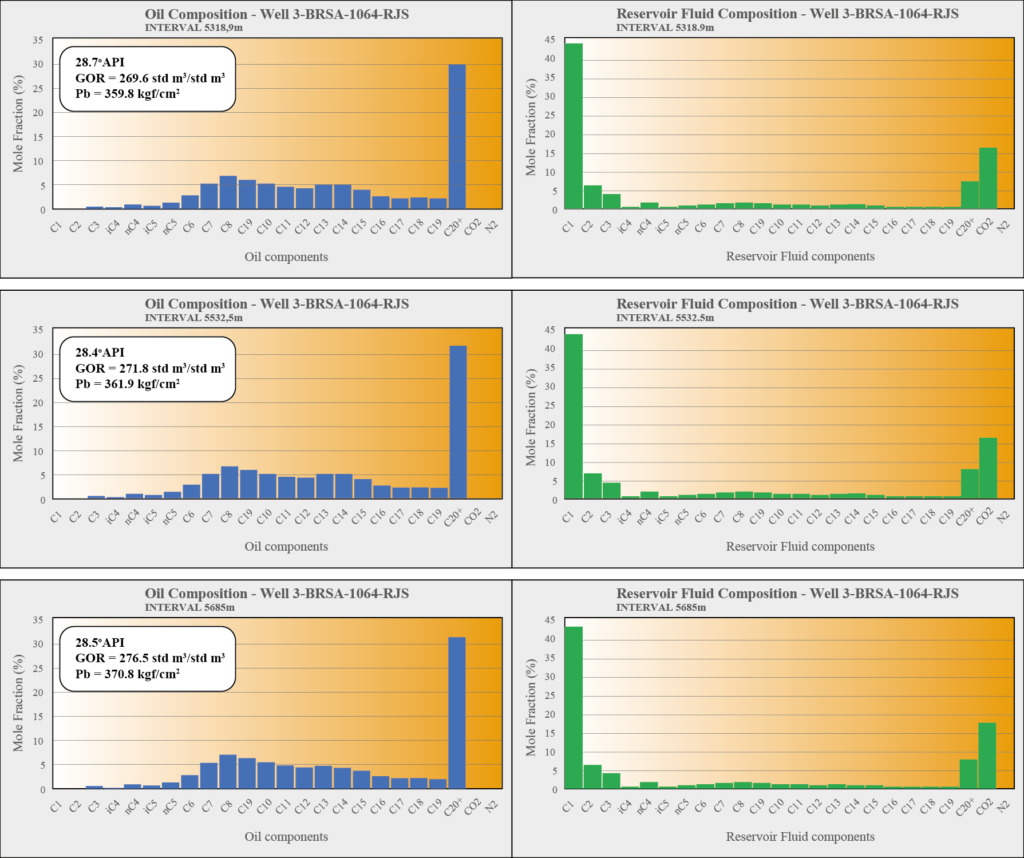Taking PVT to the next level
Pressure-volume-temperature (PVT) analysis is key to understanding how hydrocarbon composition, viscosity, density and compressibility change with pressure and temperature. Knowing how a specific hydrocarbon will react during production is essential to maximizing recovery in the shortest possible time and at the lowest possible cost.
With this in mind, BPS offers our clients one of the largest and most comprehensive collections of PVT laboratory analysis of Brazilian basins on the market. Among other essential data, the Brazil Geodatabase currently includes flash expansion, differential expansion, oil formation volume factor, gas formation volume factor and solubility ratio results from 42 samples across a wide variety of Brazilian basins (reminding that 102 new samples are slated for inclusion this year, including 74 from the Santos and Campos basins!).
Taking things a step further, the interpretation and integration of the PVT results with all other formation, pressure and reservoir data from the Brazil Geodatabase provides a user-friendly tool through which gravity segregation and compositional grading, among other important features, can be identified and explained. Check it out below!
Absence of Gravity Segregation
The PVT analysis of fluid samples collected in the pre-salt wells of the Santos Basin can provide important insights to understand the absence of gravity segregation in the very thick interconnected zones of carbonate reservoirs.
Very similar oil and reservoir fluid compositions have been found from samples from the top of the microbialite carbonate reservoir to the base of the Coquinas Reservoir, as shown in the following figure for Well 3-BRSA-1064-RJS of the Buzios Field. Moreover, fluid properties such as API gravity, Gas-Oil-Ratio (GOR) and bubble point pressure are virtually the same.

This phenomenon has been observed in many fields of the pre-salt.
Compositional Grading
Hydrocarbon fluids in the pre-salt accumulations of the Santos Basin, with very high CO2 content in very thick reservoirs, have shown abnormal behavior known as compositional grading, where two distinct phases are formed, with gas and condensate in the upper section and heavy oil in lower section, both with supercritical dissolved CO2.
This was observed in Well 3-BRSA-967A-RJS of the Jupiter Block. Relevant physical properties obtained from the PVT analysis of samples collected from the microbialite carbonate reservoirs thicker than 150 m are shown in the following table, along with compositional analysis in the figure below, highlighting the presence of gas and condensate in the upper section and heavy oil in the lower section.


It is also worth mentioning that the exploration areas in the Southeast of the Santos Basin, including the Peroba and Pau Brasil blocks, are favorable for the occurrence of higher CO2 content that can be accompanied with the consequent compositional grading phenomenon.
Home / Taking PVT to the next level

